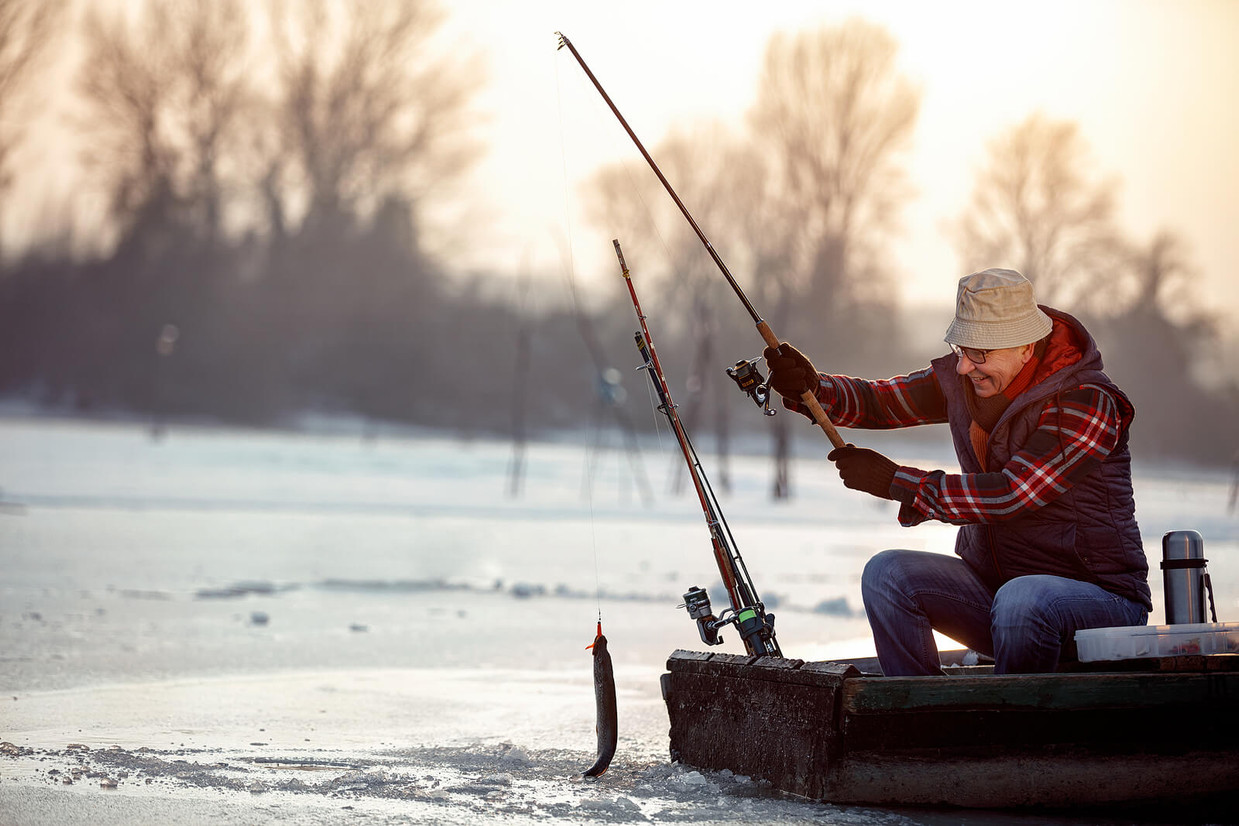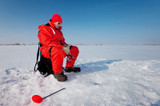Ice Fishing Season Prep: Your Essential Pre-Ice Checklist
When the lakes start freezing, it’s time to swap your boat for an ice auger. But before you hit the ice, a little prep goes a long way. Whether sharpening hooks, checking your fishing rod, or organizing your ice fishing gear, a checklist can mean the difference between landing a trophy catch and going home empty-handed. Our guide covers everything you need to start the ice fishing season confidently.
Ice Fishing Safety Tips
Ice fishing offers a unique thrill, but safety should always be your priority. Before stepping onto the ice, follow these thickness guidelines:
- 4 inches: Safe for walking and drilling holes.
- 5-7 inches: Handles snowmobiles and ATVs.
- 8-12 inches: Ready for small vehicles.
Avoid thinner ice near inlets or moving water—it’s unpredictable and risky. Check local ice reports and choose clear, thick ice over slushy patches—pack essentials like ice picks, a throw rope, and a flotation device to stay prepared.
Inspect and Maintain Ice Fishing Gear
Don't let a malfunctioning piece of equipment ruin your day on the ice. Here’s how to ensure your gear is ready for action:
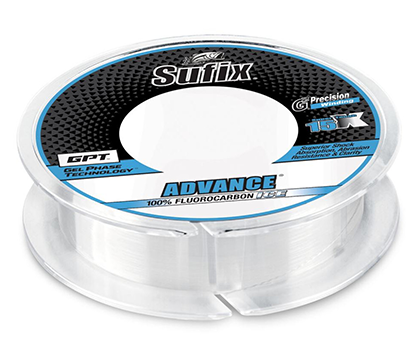
- Fishing lines. Look closely at your fishing lines and replace any that show signs of wear, nicks, or brittleness.
- Rods and reels. Give your fishing rods and reels a little TLC before the ice season begins. Check the guides, reel seats, and line guides for cracks or wear—small issues can cause big headaches on the ice. Clean off dirt or grime, and make sure your reels operate smoothly to avoid tangles or missed bites.
- Lures and hooks. Take a moment to inspect your lures and jigs—dull hooks should be sharpened, while rusted or bent tackle needs replacing. Fresh, sharp hooks ensure a clean set and reduce the chance of losing a catch.
- Augers. If you’re using a power auger, start by checking the blades. Sharp blades make drilling quick and easy, so either sharpen them yourself or take them to a professional to be honed. For gas-powered models, check that you’re running on fresh fuel and double-check all connections to ensure everything is tight and ready to go.
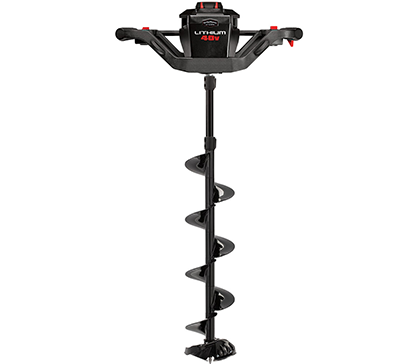
Checking and Testing Electronics
Modern ice fishing relies heavily on gadgets to find fish and stay on course. Before you head out, check and test all your electronics:
- Fish finders and sonar. Start by thoroughly inspecting your fish finders and sonar equipment. Power each device on to ensure it's fully functional, and inspect cables for wear or loose connections.
If your unit relies on software, look for updates—these can improve accuracy and unlock new features. Clean the transducer to prevent debris from affecting readings, and test it in water (if possible) to confirm reliable depth and fish detection.
- GPS devices. Test your GPS devices to ensure they work correctly and update maps for accurate navigation. Mark your favorite fishing hotspots or new areas you want to explore. This will save you time on the ice and help you easily return to productive locations.
- Battery checks. Cold drains batteries fast, so test each device and fully charge it before your trip. Bring spare batteries to avoid interruptions. Use insulated cases or keep electronics in inner pockets to retain warmth and extend battery life, ensuring your gear works when you need it most.
Organize and Restock Essentials
Keep your ice fishing setup well-organized to save time on the ice and ensure that everything you need is within easy reach when the fish are biting.
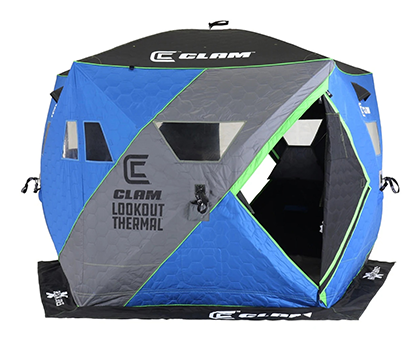
- Ice shelters and sleds. Your ice shelter is your home base on the ice. Inspect it for any tears, rips, or damaged poles. Check the zippers and make sure they’re in working order. Organize your gear within your sled using bins, boxes, or dividers to prevent items from shifting during transport.
- Clothing and boots. Staying warm and dry is the difference between a comfortable or miserable ice fishing experience. Inspect insulated clothing for wear and tear, especially seams and zippers. Check boots to confirm they’re waterproof and provide solid traction on icy surfaces.
Layering is key—start with moisture-wicking base layers, add insulation, and finish with a waterproof outer layer to stay warm and adapt to changing weather.
- Bait and tackle. Take an inventory of your bait, tackle, and other essential supplies. Restock any items you’re running low on, such as hooks, line, lures, and bait. Organize your tackle box or bag to make it easy to find what you need quickly.
Pack for Comfort and Convenience
Bringing along a few extras for comfort and convenience can turn your ice fishing trip into an even better experience.
- Portable heaters and lighting. A portable heater keeps you toasty on those bone-chilling days—just make sure it’s ventilated and used safely. Don’t forget a headlamp or flashlight for early morning fishing trips or packing up after sunset—it’s a lifesaver when tying lines or finding gear in the dark.
- Comfortable seating and insulation. A comfy ice fishing chair or a portable stool can save your back during long hours on the ice. For extra warmth, throw down an insulated mat or a piece of carpet to keep your feet from freezing on the icy surface.
- Food, drinks and emergency supplies. Keep your energy up with high-energy snacks like trail mix or jerky, and don’t forget a thermos of hot cocoa or coffee to stay warm. Hydration matters too, so pack water. Toss in a first-aid kit, a whistle, a fire starter, and a compact shovel.
Planning Your First Outing
That first trip of the season kicks off your ice fishing adventures, so make it count! Double-check your gear, pick the perfect spot, and plan ahead to start things off on the right foot—and maybe reel in some brag-worthy catches.
- Research fishing locations and check regulations. Scout out local bodies of water with a reputation for great ice fishing action. Check for spots where anglers are landing big catches, and don’t skip the local fishing regulations —know the seasons, size and catch limits, and any rules on gear to keep your trip stress-free.
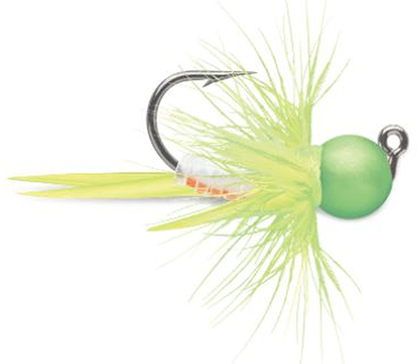
- Set goals for target species. Decide which species you want to target. Chasing panfish? Use smaller jigs and ultra-light lines. Eyeing bigger prizes like pike or walleye? You’ll need heavier gear and larger lures. Knowing your goal means you’ll hit the ice with the perfect tools for the catch you’re after.
- Coordinate with fishing partners. Fishing with friends or family works best with clear plans for transportation, meeting times, and shared gear. Sharing the load by coordinating items like power augers or ice shelters can make the trip easier for everyone. Establishing safety protocols and an emergency plan means a safer outing for the whole group.
Get Ready for a Successful Ice Fishing Season With FISH307
Getting ready for the ice is half the fun of the season. Checking your fishing rod, organizing your ice fishing gear, and tackling those pre-season to-dos sets you up for success when the lakes freeze over.
At FISH307, we’ve got everything you need to kick off your season right. Think durable ice augers, cozy shelters, warm clothes, and reliable electronics—all in one place.
Explore our ice fishing collection and gear up for an unforgettable season. With the right prep and equipment, you’ll reel in memories (and fish) in no time.
Recent Posts
-
Ice Fishing Safety 101: What Every Angler Needs To Know
Ice fishing offers a unique thrill, but safety should always come first. Knowing the basics of ic
-
Ice Fishing Season Prep: Your Essential Pre-Ice Checklist
When the lakes start freezing, it’s time to swap your boat for an ice auger. But before you hit the



